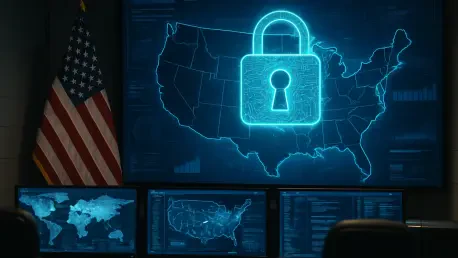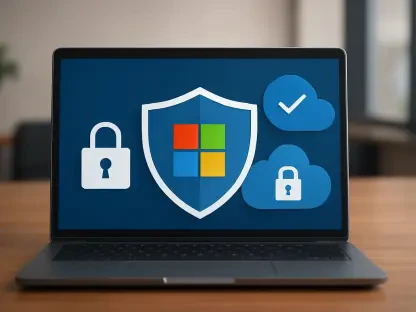The Cybersecurity and Infrastructure Security Agency (CISA), a pivotal force in safeguarding America’s digital landscape, faces unprecedented challenges due to recent layoffs, which come at a critical juncture when cyber threats are escalating at an alarming rate. With global attacks surging by a significant margin in recent times, this scenario raises a pressing question: how can the private sector adapt to diminished federal support while ensuring robust protection against increasingly sophisticated adversaries? The stakes are high, as critical infrastructure and enterprise networks alike depend on timely threat intelligence and coordinated defense strategies.
This guide outlines actionable best practices for cybersecurity leaders to navigate the risks posed by a weakened federal cyber presence. It delves into the importance of proactive collaboration, internal fortification, and resilient architectures to mitigate vulnerabilities. By adopting these strategies, organizations can bolster their defenses and maintain operational integrity despite reduced government resources.
Understanding the Impact of Reduced Federal Cyber Support
The role of CISA as the central coordinator of civilian cyber defense cannot be overstated. Established to unify efforts across government and private sectors, the agency has been instrumental in sharing threat intelligence and fostering cross-sector collaboration. However, staff reductions threaten to slow down these critical functions, leaving both public and private entities more exposed to cyber risks.
A shrinking federal capacity exacerbates an already daunting threat landscape. With cybercrime losses projected to reach staggering heights in the coming years, and adversaries leveraging advanced tools like artificial intelligence for more effective attacks, the timing of these layoffs could not be worse. The diminished ability to respond swiftly to emerging threats creates a ripple effect, impacting national security and enterprise stability alike.
The immediate risks include delayed threat alerts and thinner intelligence pipelines, which hinder organizations’ ability to preempt or mitigate attacks. Furthermore, reduced guidance from federal entities leaves private enterprises grappling with uncertainty in risk management. Addressing these gaps requires a strategic shift toward self-reliance and collaborative efforts within the private sector.
Best Practices for Mitigating Risks in the Private Sector
Collaborate Through Threat Intelligence Sharing Groups
One of the most effective ways to compensate for reduced federal support is by joining threat intelligence sharing groups. Sector-specific or cross-industry bodies, such as the National Council of ISACs (NCI), provide a platform for organizations to access actionable data and coordinate responses. For industries lacking coverage, forming or joining an Information Sharing and Analysis Organization (ISAO) can facilitate peer-to-peer cyber risk information exchange.
A notable example of success in this area is the Financial Services Information Sharing and Analysis Center (FS-ISAC). This group has demonstrated the power of collaboration by enabling financial institutions to share real-time threat data, resulting in faster identification and mitigation of attacks. By participating in such networks, companies can stay ahead of threats even when federal alerts are delayed.
Beyond joining these groups, establishing internal processes to ingest and act on shared intelligence is crucial. Standards like NIST SP 800-150 offer a framework for integrating external threat data with internal systems, ensuring that organizations can respond promptly to warnings. This proactive approach helps maintain a strong defensive posture despite external challenges.
Fortify Internal Defenses with Robust Processes
Strengthening internal cybersecurity measures is another vital step for organizations facing a federal support vacuum. Investments in advanced threat detection and monitoring tools are essential, particularly for countering fast-evolving threats like AI-enabled phishing. Prioritizing workforce training on recognizing and responding to such attack vectors can significantly reduce the likelihood of successful breaches.
A practical application of fortified defenses is the adoption of zero-trust architecture alongside email authentication protocols such as DMARC, SPF, and DKIM. One company, by implementing these measures, successfully thwarted a major phishing campaign that could have compromised sensitive data. This example underscores the importance of reducing the attack surface through rigorous internal controls.
Additionally, organizations should focus on supply chain security to prevent vulnerabilities from third-party interactions. By embedding cybersecurity into business strategy rather than treating it as a standalone IT issue, companies can ensure a more holistic defense mechanism. This shift in perspective is critical for long-term resilience.
Build Resilience with a Layered Defense Approach
Resilience in cybersecurity hinges on diversity—diversity of systems, vendors, and strategies. A layered defense approach, incorporating zero-trust principles, multi-factor authentication, and AI-based tools, ensures that a breach in one area does not compromise the entire network. This method is particularly effective as reliance on singular technologies can create single points of failure.
An illustration of this strategy in action is a company that adopted a multi-vendor approach for its cybersecurity solutions. When one vendor’s system was breached, alternative solutions maintained operational continuity, preventing significant damage. Such redundancy is a cornerstone of a resilient cyber defense framework.
Moreover, integrating varied defensive technologies helps organizations adapt to the dynamic nature of cyber threats. Combining traditional security measures with innovative tools allows for a more comprehensive shield against attacks. This adaptability is essential in an environment where federal oversight may be inconsistent.
Immediate Actions for Cybersecurity Leaders
Cybersecurity leaders must act swiftly to address the gaps left by reduced federal support. Educating boards and senior management about the implications of these cuts is a priority to secure buy-in for increased vigilance and budget allocations. Highlighting the urgency of the situation can drive necessary investments in protective measures.
Implementing efficient coverage of the most likely attack vectors using the 80/20 rule can optimize resource allocation. Enforcing multi-factor authentication with biometric integration, locking down email systems with strict DMARC policies, and establishing or funding a Cyber Incident Response Team (CIRT) are critical steps. Regular scenario drills, such as responding to AI-driven phishing attacks, ensure preparedness.
Collaboration remains a key pillar even in immediate actions. Subscribing to threat feeds from ISACs, ISAOs, or open-source platforms, and ensuring security operations teams can translate intelligence into actionable rules, bolsters defense capabilities. Forming peer networks to share anonymized incident data further strengthens collective resilience against cyber adversaries.
Reflecting on the Path Forward
Looking back, the journey through diminished federal cyber support underscored the urgency for private sector initiative. The challenges posed by CISA layoffs revealed vulnerabilities but also highlighted the potential for industry-driven solutions. Collaborative networks and internal fortifications proved to be indispensable in maintaining security.
Moving ahead, organizations must commit to sustained investment in cybersecurity infrastructure and partnerships. Exploring opportunities to enhance private-public collaboration, even in a limited capacity, can yield valuable insights and resources. Sharing incident summaries and participating in cross-industry exercises will be vital for collective defense.
The evolving cyber threat landscape demands continuous adaptation and vigilance. By embedding these best practices into core operations, companies can not only weather the current storm but also build a foundation for enduring security. The focus must remain on proactive measures and innovative strategies to stay one step ahead of adversaries.









